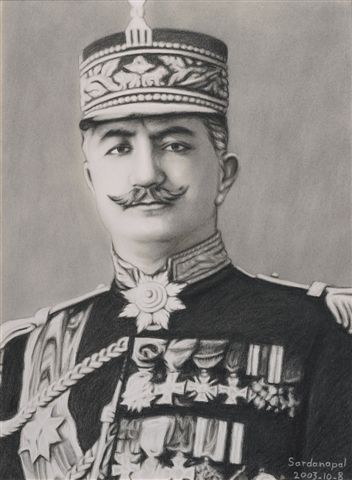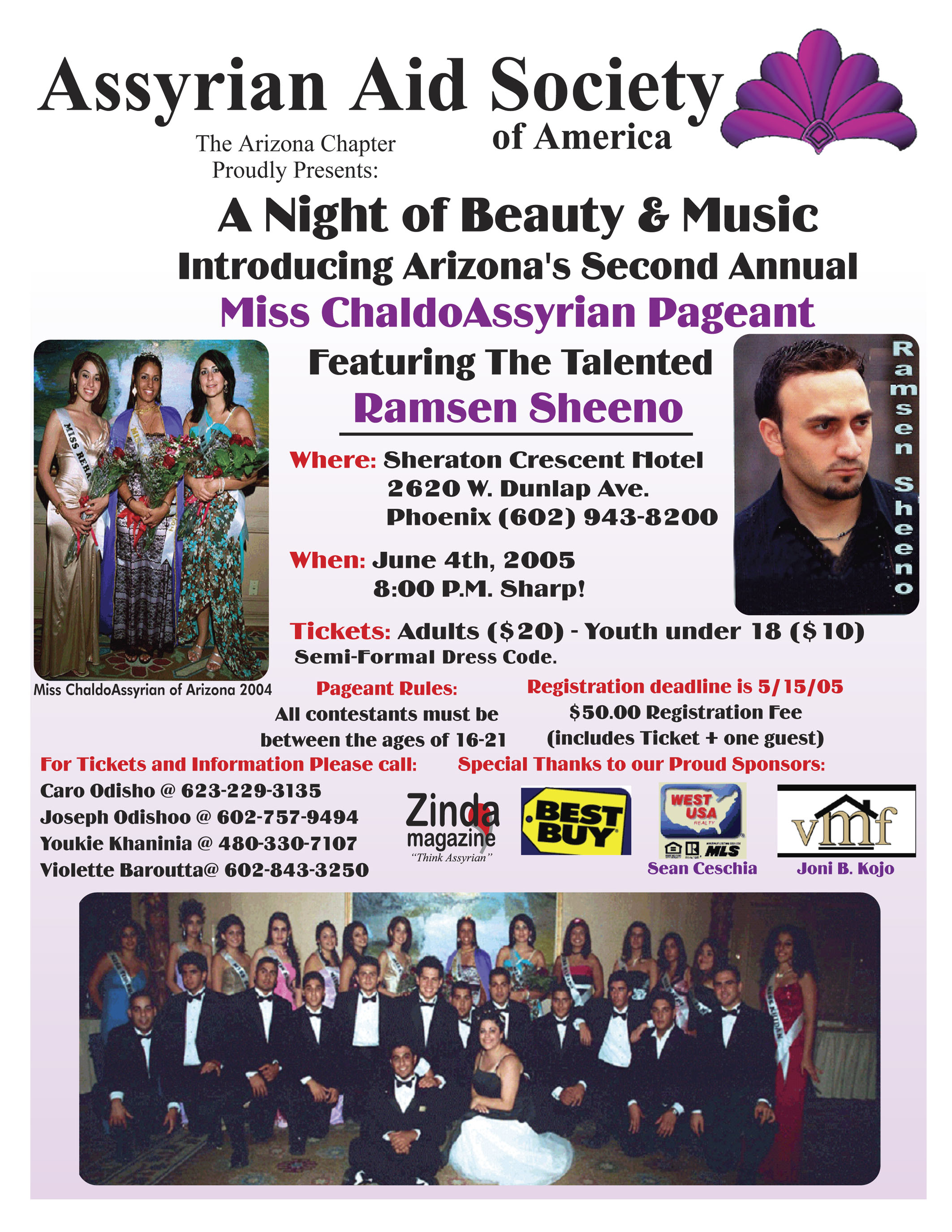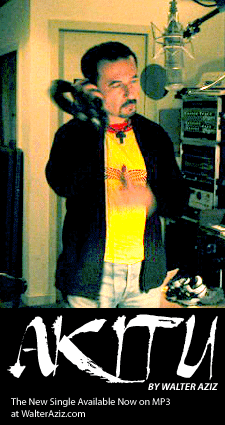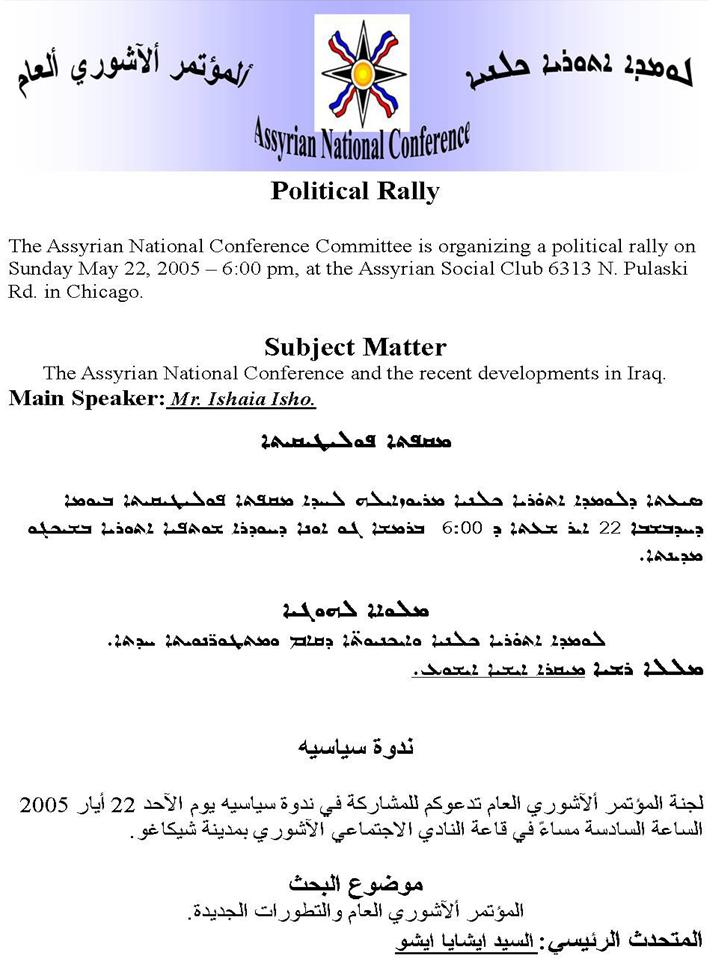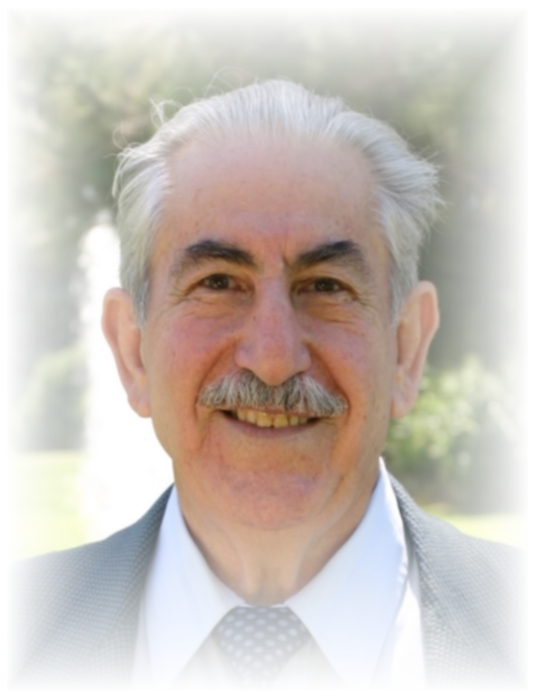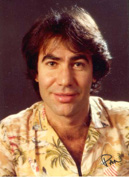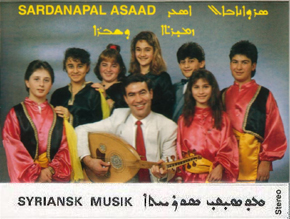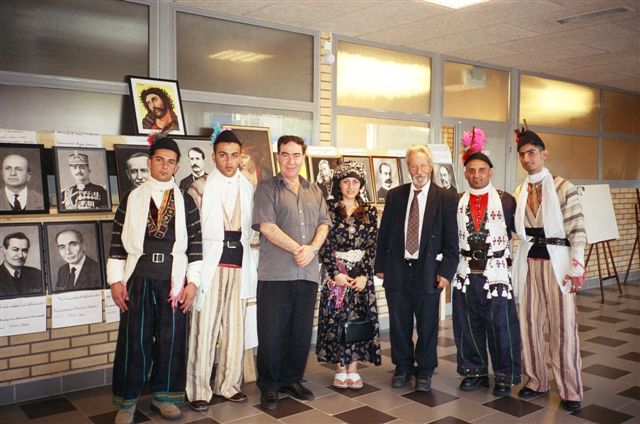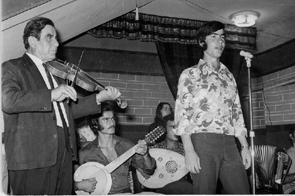Church of the East Mission to India
Mar Aprem Metropolitan
Trichur, India
It is a well-known fact that there was Christianity in India from the early centuries of the Christian era. There is a strong tradition that St Thomas, the doubting disciple of Jesus, went to India in 52 A.D. and established seven churches before he was martyred in Mylapore near Madras in 72 A.D.
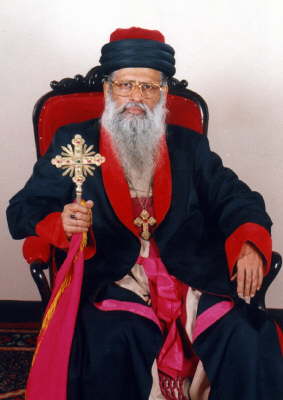 |
Mar Aprem Metropolitan |
Some historians are not convinced, because there are no written documents or coins depicting the picture of St. Thomas. One thing is certain: ever since the discovery of the monsoon winds, the land and sea routes were open from the Mediterranean via the Persian Gulf to India and there were indeed intense contacts between these areas. Nothing excludes that the Apostle could reach India on the board of a sail ship. So while what tradition says contains no impossibility, it is the main formative element of the identity of a large and flourishing (at present between seven and eight million-strong) Eastern Christian community.
In Urmia, in northern Iran, there is a strong tradition that St. Thomas preached there. There is a lake there, where, according to the oral tradition, St.Thomas performed a miracle throwing the water and making it stay in the air. The same tradition also exists about a pond in Palayur, near Trichur, Kerala. The identity of the two traditions is, in a way, another testimony to the connection between Persia and India from the early centuries of the Christian era.
There is also a North Indian tradition regarding the missionary labours of St. Thomas. It is based on the first chapter of the Acts of Judas Thomas, one of the New Testament apocrypha. According to this book, the Apostles gathered in Jerusalem to cast lots, in order to determine to which place each apostle should go for missionary labours. India was the place allotted for Thomas. He was unwilling to go. Then the Lord Jesus Christ told him to go to India without fear.
This book mentions Gundaphorus as the Indian king in whose kingdom St Thomas was preaching the Gospel. He may be identified as an Indo-Parthian ruler. He sent Habban to bring a slave carpenter to build a palace for him. Habban bought Thomas for 20 pieces of silver. King Gundaphorus gave him a large amount of money to build the palace. But he distributed it to the poor instead of building the palace. When the king wanted to see the palace Thomas said that he had already built it , but it was in heaven. The angry King put both Thomas and Habban in prison.
The king's brother, Gad, died. When he went to heaven he saw the palace built by Thomas. He was revived to tell his brother, the king, about the palace he had seen in Heaven. Immediately, the king released Thomas and was baptized a Christian. Many of his people also were converted to Christianity. The archaeological evidence is in favour of the existence of a King named Gundaphorus. After the end of the Maurya empire and before the rise of the Kushan dynasty in Punjab, Gundaphorus ruled North India. He came to the throne in 16 AD and ruled up to 45 AD. That tradition says St. Thomas worked in Punjab and other parts of North India.
The North Indian tradition does not rule out the possibility of the tradition of South India. The Apostle could have come to the South after he worked in the North. Still, the South Indian tradition is stronger, because there is a strong Christian community in existence today. However, in North India, the strength of the Christian community dwindled. In the North the early Christian communities have disappeared.
In many ancient sources there are references to the existence of Christianity in India from early centuries. The Doctrine of the Apostles (ca. 250 AD) locates the mission of St.Thomas to India. St. Ephraem the Syrian (Mar Aprem: 306-373 AD) has references to India. St Jerome, another great Church Father of the 4th century, refers to St.Thomas in India. Gregory of Nazianzus (397 AD), Paulinus of Nola (353-431 AD), Gaudentius of Brescia (410 AD), St. John Chrysostom (349-407 AD) and Gregory, Bishop of Tours (538AD) are some of the early writers who referred to St.Thomas Christians in India.
A Syriac codex preserved in the Vatican archives, written in Cranganore in 1301 AD, refers to the Apostle Thomas as the founder of the Indian Church.
The existence of a community using Syriac as liturgical language, as well as the existence of the tomb of St. Thomas in Mylapore are two points strongly in favour of the South Indian tradition.
St. Thomas is believed to have landed in Cranganore on the southwest coast of India. Local traditions hold that St Thomas had built seven churches between 52 AD and 72
AD, which were in Cranganore, Quilon, Palur, Parur, Pallipuram(or Kokamangalam), Niranam and Nilakkal, also called Chayal. He is believed to have ordained priests from four famous Brahmin families namely Pakalomattam, Sankarapuri, Kalli and Kaliankal. Some modem scholars question the veracity of this statement on the basis of the argument that there were no Brahmins in South India at that time. However, this statement also needs appropriate documentation.
The martyrdom of St. Thomas has taken place at Chinna mala (Little Mount) in Mylapore near to the city known as Madras (now changed to Chennai). The name Mylapore means the city of peacocks. At present the place of his martyrdom and burial is controlled by the Roman Catholic Church. Pilgrims from all over the world visit this tomb. There are doubting Thomases who doubt the authenticity of the tomb of St. Thomas at Mylapore.
A Hindu writer, K.C.Singh, Joint Secretary, Publicity division of the Ministry of External Affairs of the Government of India , New Delhi, published an article in Indian Perspective, entitled 'Kerala, Asias's Cradle of Christianity.' There he writes:
---The lure of spices attracted traders from the Middle East and Europe to many trading ports, Calicut, Cranganore, Cochin, Aleppey and Quilon long before the time of Christ and it was on trading vessel plying between Alexandria and
Malabar coast that St. Thomas the apostle arrived in Cranganore in 52 AD. ... . ..
According to another tradition, in 345 AD, Thomas of Cana, a rich Syrian merchant from Persia, also landed in Cranganore, accompanied by seventy families. Their descendants, the endogamous Knanaya community, boast of having preserved pure Syrian blood. Thomas of Cana and the bishops who accompanied him found the indigenous Indian community in spiritual need and distress, which they healed by establishing a permanent contact with the Syrian Church. So, if we are to believe tradition, ever since Thomas of Cana, the Malabar Church, consisting of an Indian and a Syrian component, ecclesiastically and culturally belonged to the Syrian Christian world.
At present the ethnic Syrian Knanaya community numbers more than a quarter of a million people. Half of them belong to the Roman Catholics, known as the Syro-Malabar Church, in a separate diocese known as the Kottayam diocese. Even the Knanaya Catholic churches in America are administered by the bishop of the Kottayam diocese. The members ofthis church are not allowed to marry Syro-Malabar Christians belonging to other dioceses. This is an East Syrian Church, which uses the liturgy of Mar Addai and Mar Mari.
The second half of this Knanaya community, tracing its origin back to the immigration of the merchant Knai Thoma in 345 AD, is a Syrian Orthodox diocese. They also do not intermarry with other members of the Syrian Orthodox community. They use the liturgy of St James. That is a western Syriac Church. In simple words the difference between these two groups of the Knanaya community is that their bishop in the Syro-Malabar is known by the title Mar, while the Syrian Orthodox Knanaya bishop will be Mor. A becomes 0 in Western Syriac.
A second Syrian immigration took place around 823 AD. Mar Sapor and Mar Prot are the two saints who led this immigration. Their feast is on May 19th. We do not know much about this immigration.. It is believed that Mar Sapor and Mar Prot were bearded bishops. There are speculations about these two names. Some scholars think that Sapor is a Persian name. Prot can be Aphraat or Pheroz, another Semitic name. Some merchants came with them to Quilon , which was a commercial centre.
Some copper plates were given by the local ruler Stanu Ravi Varma to the new immigrant community under Mar Sapor and Mar Proto These copper plates contain the privileges granted to the Christians ofTharisa Pally. The inscriptions of these copper plates give us an idea about the special status of the Christian community of the 9th century. Quilon was the second prominent seaport of Kerala coast next only to Cranganore. The number of privileges inscribed on these copper plates is 72.
Privileges to lravikorthan
The King Veera Raghavan granted special privileges to a merchant named Iravikorthan. This document is now in the possession of the Indian Orthodox Church in Kottayam. Christians formed not only a mercantile community, but also a military group to assist the King in case of emergency. The Christians were equal to the advanced community. They may have been a minority community numerically, but in influence they were a strong community in the predominantly Hindu society.
The Villarvattam Dynasty
During the period between the 9th and 14th century there was a royal dynasty known as Villarvattam. There was a Christian King in this dynasty ruling one of the territories in Kerala. This tradition of the Christian King in Kerala is questioned by some students of history. At the end of the 15th century the Christians of Kerala were not strong enough. Even the local rulers did not favour the local Christians. That must have been a reason why the Syrian Christians in Kerala submitted to Vasco da Gama when he arrived in the Malabar coast in 1498 AD. The Christians used to enjoy certain honorific titles such as Tharaken, Muthalali, Panicker and Mappila..
The importing and copying of manuscripts to and in India became a normal phenomenon. The situation changed when the Portuguese arrived in Malabar. There are many manuscripts in Syriac language copied in Iraq and preserved in India. Although a lot of these Syriac manuscripts were burned, some have survived the fury of the Synod of Diamper held in 1599 A.D.
Trichur, Pampakuda, Mannanam, Kottayam, Ernakulam, Bangalore and other places have Syriac manuscripts. Most of these Syriac manuscripts were copied in the Syria-Iraq Mesopotamia area. Some were copied in Kerala. A Kashkol preserved in Trichur was copied in Kothamangalam in 1585 A.D. Although the colophon does not mention from which manuscript this book was copied in Kothamangalam in 1585 AD, it is believed that it was from some copy of the Kashkol written in Iraq.
There is unfortunately no record of the chronological history of the Church of the East in India until the arrival of the Portuguese in 1498 AD
Some Syriac words adopted in Malayalam language by transliteration are the following
Aboon |
Alaha |
Almaya |
Ameen |
Ba’utha |
Barekmar |
Bukhra |
Dayara |
Denha |
HaikIa |
Hannan |
Hosanna |
Husaya |
India (Hindu) |
Kaldaya |
Karozutha |
Kasa |
Keepa |
Madbaha |
Mahron |
Malakha |
Malpan |
Mamodeesa |
Mar |
Maranaya |
Maraneshomeshiha |
Marth Mariyam |
Maudiyana |
Mauthbenmar |
Mazmura |
Methran |
Mhaimneenan |
Mhshiha |
Nasrayan |
Parudeesa |
Peelasa |
Pes'ha |
Preeshen |
Qabar |
Qadisanmar |
Qnuma |
Qudasha |
Qurbana |
Ramban |
Ramsha |
Raza |
Resh Pathriyarkees |
Ruha . |
Ruha d' qudsa |
Rushma |
Sahada |
Samaryan |
Sapra |
Sedra |
Shemmasenmar |
Shleeha |
Skeepa |
Sleeba |
Subara |
Thakhsa |
Uraha |
Urara |
Yakobaya |
Yeerenmar |
|
Before Baghdad flourished as a centre of intellectual activity, there was a renowned
School of Christian theological studies at Nisibis, opened in 489 as the heir to the former School of Edessa, considered to have been something like the first theological academy in Christendom. The eminent teachers of this school translated the works of Antiochian Doctors into Syriac and applied them in exegetical and theological
investigations. It is said that students from the Church in India also attended the
School of Nisibis.
Spread of Syriac in India
St. Thomas spoke the same language which Jesus spoke, namely Aramaic. During the first centuries of the Christian era, South India had commercial relations with Mesopotamia and other countries of the Middle East where Aramaic was spoken. Aramaic was the' Lingua Franca' of oriental Christianity. Language is not a mere vehicle of abstract ideas, it is really the authentic expression of a way of life, the living manifestation of a culture.
In a cross-cultural situation like the one in India, the use of the native language is very important for the effective communication of the gospel. Nevertheless, the St. Thomas Christians in India used East Syriac, which they considered an inestimable treasure and a hieratic language. The Christians in India were attached to this language, which was intimately connected with their faith.
The Church of the East's relationship with the Indian Church
According to the Malabar tradition, St. Thomas consecrated a certain Kepa as his successor and bishop. The same tradition holds that he ordained priests and deacons from several families and thus organized the church of Malabar before he left for Mylapore. Later, to carry out the ministry of the church, according to the tradition of the Church of the East there were the offices of metropolitan, bishop, archdeacon, corepiscopa, priests and deacons.
Some kind of relation between the Christians of India and the East Syrian Church existed from very early centuries in the church of the St. Thomas Christians in India, which is alleged to have had suffered, in the course of time, a decline. The common St Thomas-heritage, which Malabar church enjoyed along with churches such as Edessa and Seleucia-Ctesiphon brought them into closer relations.
From time to time, the Catholicos of the East would have consecrated and sent prelates to India. According to the testimony of Cosmas Indicopleustes (520 -525 AD), the Indian Church was hierarchically connected to the Persian Church. A clear and a precise picture of the relations between the two churches can be gathered from the letters of the Patriarchs Mar Ishoyahbh –III (647 - 650 AD) and Mar Timothy -I (780-823 AD) . These letters bear testimony to the fact that the Christians of India were jurisdictionally subject to the East Syrian church.
Tradition is unanimous in asserting that the prelates of the Thomas Christians came from the Church of the East for many centuries before the arrival of the Portuguese in India in 1498 A.D. Delegations were also being sent from India asking for bishops. Such a delegation was sent in 1490 AD, in which Joseph the Indian was a member. From the writings of the sixteenth century, especially from the decrees of the synod of Diamper of June 1599 AD, we understand that the East Syrian Church's prelates who reached India brought with them many East Syrian Church law-codes. These prelates visited India as a part of the East Syrian mission to propagate the Christian message. Their books were in Syriac language. The people in the Church in India was not keen to translate these books from Syriac to Malayalam.
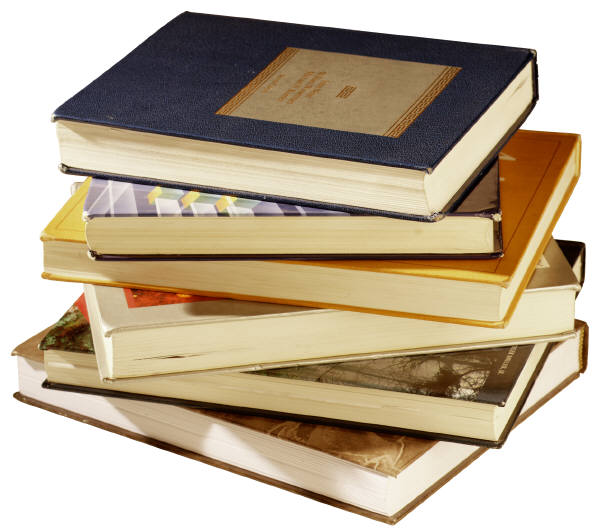 |
ANTIQUARIAN ARCHAEOLOGY & SYRIAC BOOKS EXHIBIT 2005
Sunday, June 26
2:00 - 7:00 pm
at the
Assyrian American Association of Southern California
5901 Cahuenga Blvd.
North Hollywood, CA 91601
(818) 506-7577
Free to Public
Rare classic books, Bibles, Maps, Syriac books, Contemporary
History books and documents will be on exhibit.
Authors and Book vendors are welcome to participate. Free space will be provided.
Applications for upcoming AAASC's Paul Alex Youhanan Scholarships will be available. |
The Persian Church's Prelates in the Malabar Church
Whenever the Malabar bishop died without being able to consecrate a successor, the Malabar Yogam, or Church Assembly, headed by the Archdeacon, applied to the Catholicos of Persia to send them a bishop. The Niranam Chronicle gives a list of the East Syrian Metropolitans and Patriarchs who came to Malabar. (875-1751). Thus there developed a long relation between the Malankara Church and the East Syrian church, both founded by St. Thomas. The Christians not only received the foreign bishops with great enthusiasm but were always very much attached to them and showed them great respect. All the 16th century Portuguese documents testify to this attachment; the Portuguese considered this deep respect of the Christians for their prelates a major obstacle to their plans of Latinisation.
The Thomas Christians through their hierarchical relationship with the East Syrian church maintained the ecclesiastical communication with the other Churches. The
hierarchical relation and ecclesial affinity with the East Syrian church did not hinder the identity and administrative autonomy of the chur,?h in India. Occasionally, the bishop sent out by the East Syrian Church Patriarch was called the Metropolitan and the Thar'a (Gate) of India. Some times these prelates were also called Metrapolitha d ‘ Kulla Hindo.
The See of the St. Thomas Christians was known for generations as the Metropolitan ~e of all India, and the Metropolitans were referred to by the same qualifying title. The openness of the Thomas Christians to the East Syrian Church and other churches was the result of their awareness of the concept of the communion of churches. Such a regional grouping or alliance of the churches was a common phenomenon among the early Churches. Though they were not used to any centralized administrative structure of the monarchical pattern at the universal level in the church, the special relationship between the Malabar Church and the East Syrian Church, which was also associated with the same St. Thomas tradition, must have led them to form part of a common ecclesiastical set-up while maintaining their own ecclesial identity and administrative autonomy.
The fullness of the Christian tradition is achieved only when the different traditions of the apostolic churches are brought into full communion. The early traditions enshrined in the different churches reveal the multi-dimensional aspects. They are mutually complementary. The different traditions in their authentic forms reveal the richness of the divine truth manifested differently by different communities but united in the same faith.
The Prelates: A Source of Spiritual Strength for the Community
The common liturgical heritage was the celebration of the common faith as the most intimate bond of ecclesial communion. Following the pattern of life of the saints and sages of the eastern and Indian tradition the East Syrian Indian Bishops preferred to live as spiritual men spending their life in prayer, study, fasting and other ascetic practices. Liturgical celebrations were solemn occasions to the public manifestation of the faith of the community. The bishops presided over such solemn occasions.
The Metropolitans and Bishops were instrumental in the spiritual growth of the community. The main duties of the Metropolitans included the consecration of altars and the ordination of priests. The Bishops were spiritual men who were mostly monks. They were occupied with the role of a spiritual leader Le., liturgical celebrations, conferring of sacramental orders, hierarchical communion, teaching of the holy scripture etc. So also the Christian Church has some affinity towards Syriac language. Aramaic was the language of Palestine. The respect of the language of revelation is quite natural as is observable in other religious traditions. While saying this, I do not want to enter the much-debated question of the original language - whether Aramaic or Greek - of the New Testament.
The High Esteem towards Syriac
The Thomas Christians in India who are now divided into different denominations use the East or West Syriac liturgy with East or West Syriac pronounciation. Their liturgical language is Syriac. It was later, in the 17th century, that the western form of Syriac and the West Syriac liturgy were introduced amohg some Thohias Christian communities. The Thomas Christians of the Malabar-Coast posses, inestimable treasures in Syriac, both in East Syriac and West Syriac script and-dialect.
The liturgical language of the Thomas Christians
The early Christians in India used the Syriac language in their liturgy and worship instead of their native language. Though the mother tongue of Thomas Christians is Malayalam, they preserve their high esteem for Syriac. It is, however certain that the Syriac (Aramaic) language and the very ancient liturgy of Thomas Christians, which originally took shape in the East, have been our precious patrimony for a very long period. The worship form and all other church traditions, which St. Thomas arranged in his communities, would have been in Aramaic. This may be the reason why the Thomas Christians show much affection and esteem towards that Semitic language. The Syriac music of our liturgy influenced Christian folk songs. Traditional ancient songs of the Church in Malabar are influenced by Syrian tunes.
The influence of Syriac liturgies upon the Malabar Church
The ancient liturgies of the church developed in important Christian centers where the Fathers of the church and other ecclesiastical writers flourished. They developed into definite. liturgical forms by a slow, gradual steady progress in important Christian centers. Churches or places, which were not centers of Christian knowledge, did not develop their own liturgies, but received them from centers which were near, or dear to them. They also gave them their own modality on minor points. The East Syriac homilies and commentaries contain many mystical explanations of the liturgical ceremonies. The different items of the liturgy, their traditional order, the reasons for preserving the order etc. can all be known from manuscripts preserved in India.
Syriac Manuscripts in India
Many scholars both from India and abroad contributed for cataloguing the available Syriac manuscripts in India. The following libraries possess the manuscripts. Manuscript Archives in Kerala, library of the Dharmaram College in Bangalore. Library of the Syro Malabar Catholic Archbishop in Thrissur, Library of the Konat family Pampakuda, Koonamackal priestly family manuscript collection, Kuruvilassery Library of the CMI Thrissur, St. Ignatious Dayara, Manjinikara, Li,prary of the Monastery ofSt. Joseph Mannanam, Mar Aprem collection Library ofttie Metropolitan's Palace, Thrissur, Mar Thoma Seminary, Kottayam, Private manuscrip(collection of the Nidhiri priestly family, Pulatheen Metropolitan Palace, Tiruvalla, Saint Thomas Apostolic Seminary, Vadavathur, Library of the Orthodox Theological Seminary, Kottayam, Library of the Metropolitan's Palace, Thozhiyur, Library of the Archbishop of Trivandrum.
The Thomas Christians ought to be grateful to the East Syrian Church for the inestimable treasures they posses in the Syriac language and literature. Any other liturgy was unknown to Malabar up to the 16th century. After the Synod of Diamper (1599) many East Syrian liturgical works were destroyed at the instance of the Portuguese. However, our libraries, such as the library of the Church of the East in Thrissur, testify to the fact that the Portuguese orders were not entirely obeyed and at least some manuscripts escaped the fires ofDiamper.
From the early centuries the trade of the early Christians flourished and they built churches for them to worship. In a recent study Fr.Pius Melekandathil lists several churches in Kerala with dates. The list is impressive.
The agrarian settlements of the Christian community used to establish its identity by erecting in their settlements churches, which turned out to be the principal cohesive factor for them. Pallipuram (3rd century), Ambazhakad (300 AD), Aruvithara(301 --AD), Kuruvilangad (335 AD), North Pudukad(400 AD), Puthenchira (400 AD), Akaparambu (450 AD) , Angamali(450)), Mattom (5th century),Chambakulam (5th century), Muttuchira(5th century),Kaduthuruthy (500 AD), Enammavu (500 AD), Mylakombu (6th century), Udaiamperur (510 AD) Edappally (593 AD), Chalakudy (600 Ad) ,Kolenchery (7th century), Mooozhikulam (7th century), Kayamkulam (824 AD, Athirumpuzha (835 AD), Kottayam (9th century) are the important churches, which were built in the period between third and ninth centuries, as a result of these developments.
Bosco Puthur(editor) St..Thomas Christians and the Nambudiris Jews and Sangam Literature, Kottayam,2003,,pp.44-45
In the13th century Bishop Solomon of Basra wrote a book called Book of the Bee. This book has been translated by E.A.T.Wallis Budge and published by Clarendon Press in 1886. Solomon writes in chapter 48. Thomas…. Because he baptised the daughter of the King of the Indians he (king) stabbed him with a spear and he died. Habban, the merchant, brought his body and laid it in Edessa. Bishop Medlycot rightly thinks that Habban’ name mentioned here must have been a transcriber’s substitution for the name Khabin.
In the Syriac prayer book known as Khudra there are plenty of reference to St.Thomas and his martyrdom in India.
There are certain historical references in Syriac sources. Credit goes to Alfonso Mingana who came from Iraq to England in the second decade of the 20th century and started publishing books in English. In his book The Early Spread of Christianity in India. John Rylands Library, Manchester , Vol.10, No2 , July 1926 Mingana made a strong plea in favour of Christianity in India in the first century.
Addai Scher published a little earlier (1907-1919) the Arabic book in Patrologia Orientalis the Chronique de Seert. According to that source Dudi or David, Bishop of Basra (now in Southern Iraq) visited India towards the end of the 3rd century.
Another reference is that of the council of Nicea in 325 AD. John affixed his signature to the title Bishop of the Great India and Persia. According to Mingana, John may have been a bishop in a town in North India close to Persia.
In a slender volume entitled The Historicity of Apostle Thomas, Professor Joseph Kolengadan, an ex-Jesuit, in India, wrote strongly defending the historicity of Apostle Thomas in India. He writes:
Historians’ Assessment
Pascale Warda's Visit to Germany
Irak im Umbruch
Zur Lage der Christen und anderer Minderheiten
|
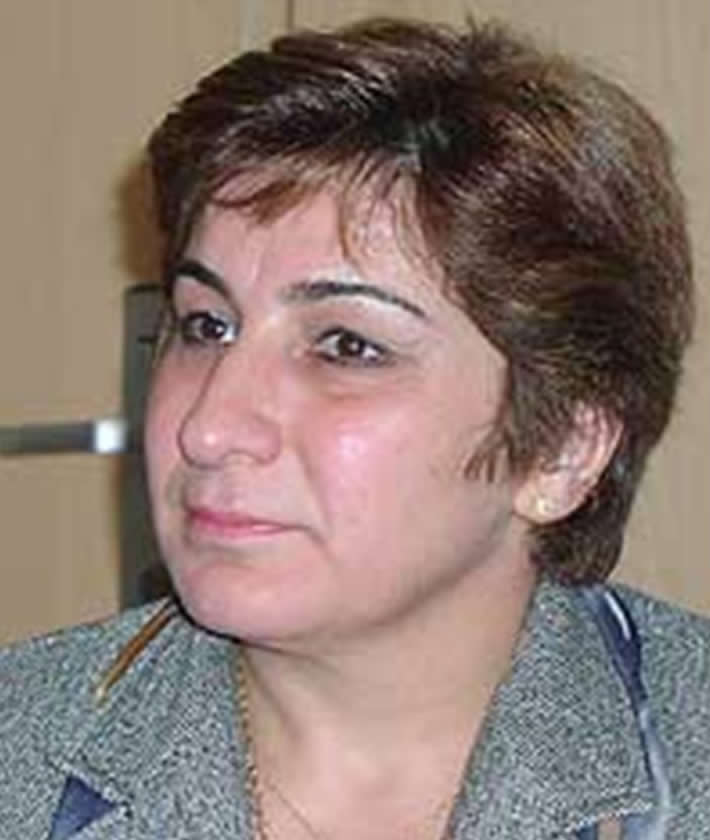 |
Pascale Warda Isho
Irakische Ministerin für Migration und Flüchtlingswesen (bis Mai 05)
spricht in Erlangen
am 21. Mai 2005, 19.30 Uhr
Aula der Universität
Schlossplatz 4, 2. Stock
Veranstalter: Lehrstuhl für Orientalische Philologie der Friedrich-Alexander-Universität Erlangen-Nürnberg; Evangelische Akademikerschaft, Landesverband Bayern |
|
Hyper critics easily yield to the tendency to reject all history not based on contemporary documents or monuments. They are not critical and patient enough to sift the gold from the dross vis-à-vis time honoured traditions and folklore. As every historian worthy of the name should not hesitate to discard baseless claims. He must likewise exercise his critical acumen in a constructive manner while dealing with long established traditions woven into the very life of the community. We have to vindicate our fathers against the ‘arm-chair historian’ in the name of scientific objectivity, pooh-poohing well-authenticated traditions, the very life-blood of a community, as Fr. Placid has aptly termed it.
King Alfred sent considerable gifts to Rome and to India in 883 A.D.. William of Malmesbury attests:
Beyond the sea to Rome and to Saint Thomas in India he (Alfred) sent many gifts. The legate employed for this purpose was Sigelinus, the Bishop of Sherborne, who with great success arrived in India, at which every one of this age wonders. Returning thence he brought back exotic gems and aromatic liquors which the land there produces.
About the year 800AD one Charansar came from Samarkand to Leh in Ladakh close to border of Tibet today, There are some inscription in Syriac language with crosses on it. This place is about 18,000 feet above the sea level. This inscription states that it took one year for the missionaries to arrive at Leh changing tents in different places.
This inscription is not properly studied by the students of Church history; The present writer came to know about it when he went to Kashmir in 1976. A picture of this inscription was printed in the first edition of his book the Nestorian Missions published by Mar Narsai Press, Trichur in 1976.
About Sabrisho we have the copper plates of the 9th century. K.S.Mathew, Professor of History, retired from the Central University of Pondichery, writes.
The first set of copper plates was issued circa 880 by Ayyanadigal, King of Venadu to the Church called Tarissa Church built at Kollam by Sabrisho, a merchant who refounded the city of Kollam in 825… The King made the church custodian of steelyard and weights and the kappan (or seal), which were formerly in the possession of the king.
The king granted all these at the instance of Sabrisho. Ayyanadigal granted another set of privileges through the copper plates issued around 880 AD but slightly later than the previous set of copper plates. They refer to the church of Kollam, the leaders of the Jews at Kollam and the authorized leaders of Manigramam or indigenous Christians of Kollam, who were there even before the arrival of Sabrisho…….. Further the church was given the right to collect fees for weighing with the steelyard and weights mentioned in the previous set of copper plates.
About travelogues we have the following important references.
Marco Polo, born in 1254 in Venice, Italy visited Constantinople finally visited \South India. He mentions that thaws great trade conducted in Mylapore by both Christians and Muslims. Marco Polo refers to Mylapore as the place of his tomb. He refers to a miracle that happened in the tomb of Apostle Thomas in 1288AD. Marco Polo adds that there were a few Christians and Jews in Kollam. He states that merchants from Manzi, Arabia and from the Levant used to come to Kollam in their ships with commodities for exchange.
Marco Polo recorded: The body of Messer St.Thomas, the apostle, lies in the province of Mabar at a certain little town having no great population… Both Christians and Saracens also do hold the saint in great reverence.
John of Monte Corvino, travelled the Coromondal coast and stayed fro time St.Thomas Mount. He died in 1294. He was a Franciscan Friar Pope Nicholas IV sent him to Persia and India. It was the part of the missionary expansion of the Catholic Church into East.
John Marignoli was a member of the Franciscan Monastery of Santa Croce in Florence. He visited Quilon in 1347. He speaks of the pepper trade of Christians and also refers to them as masters of steelyard. In 1348 or 1349 he went from Kollam to the Coromondal coast to visit the shrine of St.Thomas. He spent four days there.
Oderic of Pordenone.
Another Franciscan friar who visited India in the 14th century was Orderic of Pordnone. He came to India 1321 and from there went to China. He died in 1330 in Italy. According to Oderic there were Christians in Flandarini (north of Calicut) or Pantlayani, Kollam. According to him many people used to make pilgrimages to the Tomb of St.Thomas in the Coromandel coast..
Friar Jordanus.
A French Dominican Jordan of Severac tried to establish the a Latin Catholic Mission in India in 1321 AD. Pope John XXII created a bishopric in Quilon for
Friar Jordanus in 1329. AD
Conclusion
Since the scope of study for this Seminar ends with the 14th century we are unable to explore the reference s to this topic from the Portuguese sources. They came to India only about the end of the 15th century. Vasco de Gama discovered the sea route to India in 1498 A.D. six years after Christopher Columbus made the terrible mistake of discovering America thinking to be India in 1492. AD.
It is no doubt that the historical references to the Church in India are very scanty. It is not sure whether some copper plates or travelogues will surface which can throw light on this topic. Our dependence on the local tradition of the existence of Christianity from the earliest centuries cannot be discarded.
Alphonso Mingana, Chaldean priest from Mosul, Iraq who migrated to England and brought many Syriac manuscripts to England, was a strong supporter of the historicity of St.Thomas.Mingana argued:
There is no historian, no poet, no Breviary, no liturgy and no writer of any kind, who having the opportunity of speaking of St.Thomas does not associate his name with India…. The name of Thomas can never be dissociated from India…. Thomas and India are synonymous.
Eugene Cardinal Tisserant who wrote an article in French in Dictionary Theolog. Catholique in 1941 defended the historicity of St.Thomas in India. Fr. Edward R.Hambye, a Jesuit from Belgium who taught Church History for many years in India, defended the historicity of St.Thomas tradition in his article in Clergy Monthly in November 1952.
Another important conclusion is that the Church in India is not the result of the Mission of the Church of the East to India like the Mission of Alopen to China in 635 AD etc. The Indian Church is of apostolic origin. Just like Peter went to Roma, Mark went to Alexandria, Addai or Thaddai went to Persia, etc St.Thomas came to India. The Mission of the Church in Persia came to India. There were immigrants too. But the immigrants and Missions only strengthened an already existing Christian community.
When we refer to the Missions to India in the Pre-Portuguese period we refer to the Nestorian Missions. That is the name by which this great Missionary Church was known. John Stewart who wrote the Nestorian Missionary Enterprise, A Church on Fire wrote about the expansion of the Church of the East to India. . But since other church members began to use this name as accusation of heresy on this Church, the Church of the East began to that that we are not Nestorians. Thus the name Nestorian Church is considered a nickname of this church rather than a correct name.
The members of the Church emphasize the fact the so –called Nestorian Church was in the Persian Empire before Nestorius was born in the 4th. Century. The members of the Church are now known as Church of the East and also as Assyrian Church, East Syrian Church etc.
Most of the Christian denomination of St.Thomas tradition believes that this Church
was of Apostolic origin in India.. The one mistake many Christians make is to find out what was he denomination of St.Thomas or Thomas of Kana etc. The simple answer to that dilemma is that St. Thomas did not belong to any particular Christian denomination. Fortunately the Church in the early centuries at least up to the council of Ephesus of 431 AD did not have different denominations.
Let us resist from the temptation of baptising posthumously St.Thomas and the early Christians in different denominations that came into existence due to our human weaknesses.
The Church in India, at least a small number, kept its connections with the Catholicos Patriarch of Seleucia –Ctesiphon.. The present reader of this paper, an Indian priest, had to go over to Baghdad to be consecrated a Bishop and a Metropolitan in September 1968. This Church based in Trichur keeps its obedience to the Church of the East even now.
 Zinda: The writer of this paper, His Excellency Mar Aprem Metropolitan, was formerly known as George Davis Mooken. He took the name Mar Aprem at the time of his consecration as Bishop in Baghdad in September 1968. Born in Trichur on 13 June 1940 he studied in India, England (1961-62) and in America (1966-68). He holds two Master degrees and two Doctor degrees. He was President of the Church History Association of India during 1976 to 1982. He is the author of 63 books on Church History, biographies, humour, travelogue etc..
Zinda: The writer of this paper, His Excellency Mar Aprem Metropolitan, was formerly known as George Davis Mooken. He took the name Mar Aprem at the time of his consecration as Bishop in Baghdad in September 1968. Born in Trichur on 13 June 1940 he studied in India, England (1961-62) and in America (1966-68). He holds two Master degrees and two Doctor degrees. He was President of the Church History Association of India during 1976 to 1982. He is the author of 63 books on Church History, biographies, humour, travelogue etc..
